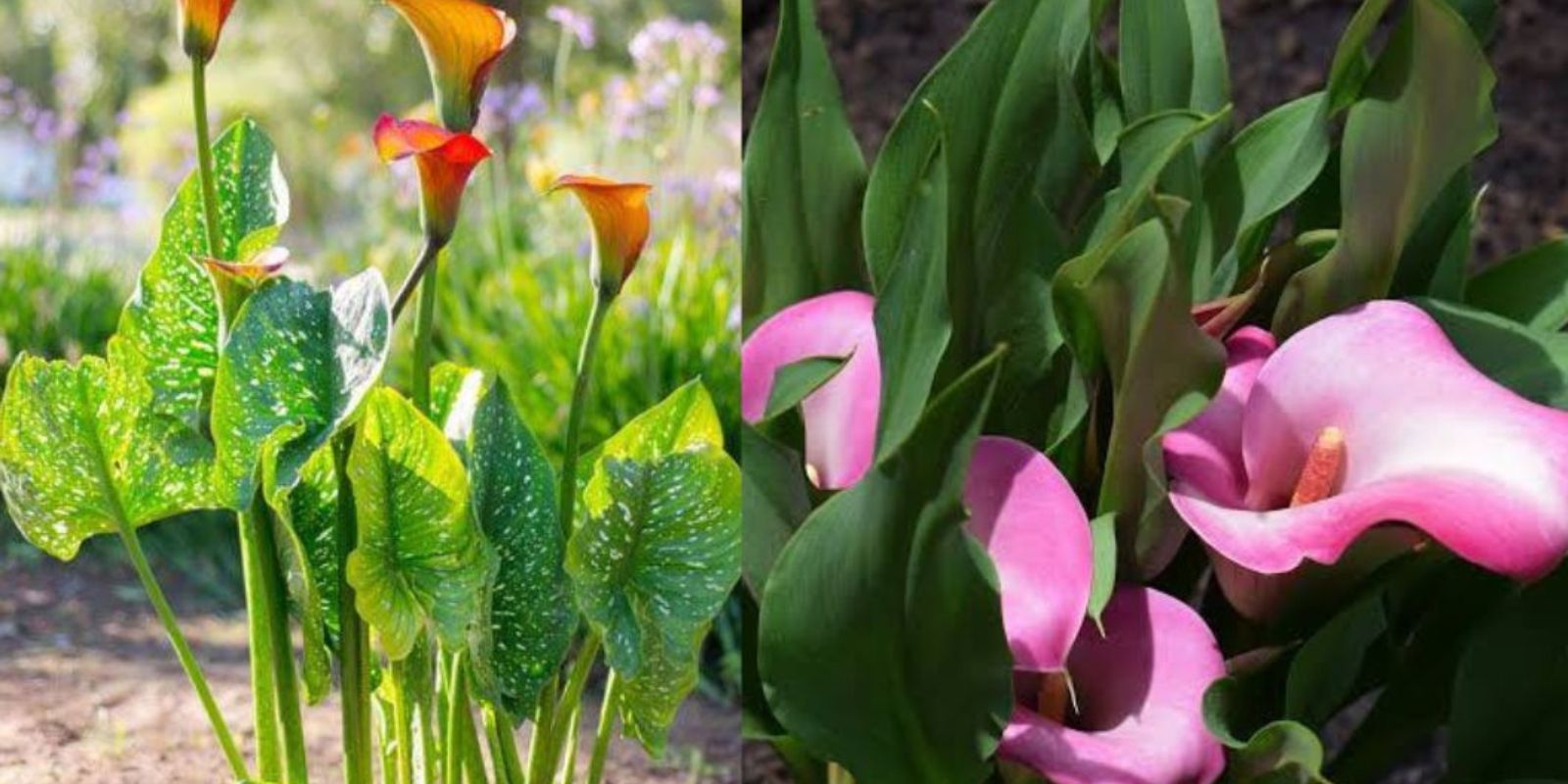Calla lilies, also known as cartuchos or alcatraz, are renowned for their elegant, trumpet-shaped blooms and glossy green foliage. Native to southern Africa, these stunning plants are versatile, thriving in gardens, containers, and even indoors. Calla lilies symbolize purity, rebirth, and marital bliss, making them popular for weddings and special occasions. In this comprehensive guide, we’ll cover everything you need to know to grow and care for calla lilies, ensuring their beauty graces your home or garden for years to come.
Choosing the Right Calla Lily Variety
Calla lilies come in a variety of colors, from classic white (Zantedeschia aethiopica) to vibrant shades of pink, yellow, orange, and purple. Selecting the right variety depends on your climate, garden design, and personal preferences. Some popular options include:
- Zantedeschia aethiopica: White flowers, ideal for damp conditions.
- Zantedeschia rehmannii: Pink or rose-colored blooms.
- Zantedeschia albomaculata: Creamy white flowers with spotted foliage.
Planting Calla Lilies
1. When to Plant
- Spring planting: After the last frost, for summer blooms.
- Autumn planting: In warmer zones (8-10), plant in fall for winter flowers.
2. Site Selection
- Sunlight: Choose a spot with partial to full sunlight. In hotter climates, provide afternoon shade to prevent overheating.
- Soil: Well-draining soil is essential. Amend heavy or clay soils with compost or sand for better drainage.
3. Planting Process
- Depth and Spacing: Plant rhizomes 4 inches deep with the “eyes” facing up. Space them 12 inches apart to give roots room to grow.
- Watering: After planting, water thoroughly to settle the soil around the rhizomes.
Watering and Feeding Calla Lilies
Calla lilies thrive in consistently moist conditions but are prone to root rot if overwatered.
Watering Tips:
- Keep the soil evenly moist, especially during the growing season.
- Water deeply once or twice a week, depending on the weather.
- Reduce watering once the plant goes dormant after blooming.
Feeding Tips:
- Use a balanced liquid fertilizer (10-10-10) every 4 weeks during active growth.
- Avoid over-fertilizing, as this can lead to excessive foliage growth at the expense of flowers.
Light and Temperature Requirements
Calla lilies perform best in environments that mimic their native habitat.
Light:
- Provide full sun to partial shade.
- In hotter regions, ensure they receive afternoon shade to protect the foliage.
Temperature:
- Calla lilies prefer moderate temperatures (60–75°F).
- They can tolerate heat but will struggle in temperatures above 85°F.
- In colder zones, lift the rhizomes before the first frost and store them indoors.
Pruning and Maintenance
Deadheading:
Remove spent flowers to encourage continuous blooming and prevent energy wastage.
Dormancy Care:
- After flowering, the plant’s foliage will yellow and die back. Reduce watering to let the rhizomes rest.
- In zones 3-7, dig up rhizomes before frost. Clean them, let them dry, and store them in a cool, dark place for replanting in spring.
Container Care:
If growing in pots, ensure the containers have drainage holes to prevent waterlogging. Use a lightweight, well-draining potting mix and re-pot every 2-3 years for optimal health.
Common Problems and Solutions
- Pests:
- Aphids and Spider Mites: Wipe leaves with soapy water or use insecticidal soap.
- Snails and Slugs: Use barriers like crushed eggshells or organic slug pellets.
- Diseases:
- Root Rot: Ensure proper drainage and avoid overwatering.
- Powdery Mildew: Improve air circulation and avoid wetting the leaves.
- Environmental Stress:
- Dry Air: Calla lilies prefer humid conditions. Mist the leaves or place a tray of water near indoor plants to increase humidity.
- Poor Blooms: Ensure adequate sunlight, proper watering, and balanced fertilization.
Propagating Calla Lilies
Calla lilies are easy to propagate by dividing their rhizomes.
Steps for Propagation:
- After the plant goes dormant, carefully dig up the rhizomes.
- Separate the rhizomes, ensuring each piece has at least one growth point.
- Replant the divisions in fresh soil or store them for spring planting.
Growing Calla Lilies Indoors
Calla lilies can thrive indoors if provided with the right conditions.
Tips for Indoor Cultivation:
- Containers: Use pots with drainage holes.
- Light: Place the pot near a bright window, away from direct sunlight.
- Watering: Keep the soil moist but not soggy. Water from the bottom to prevent fungal issues.
- Feeding: Apply a diluted liquid fertilizer monthly during the growing season.
Symbolism and Uses
Calla lilies are more than just beautiful flowers—they carry deep symbolism. Representing purity, grace, and rebirth, they’re commonly used in weddings, funerals, and religious ceremonies. Their elegant blooms also make them a popular choice for floral arrangements and home décor.
Conclusion
With their timeless beauty and easy maintenance, calla lilies are a delightful addition to any garden or home. Whether you grow them outdoors in the garden, in containers on your patio, or indoors as a houseplant, these versatile flowers reward you with their striking blooms and lush foliage. By following the care tips in this guide, you’ll enjoy healthy, thriving calla lilies year after year.
What’s your favorite variety of calla lily? Share your experiences and tips with us in the comments!

